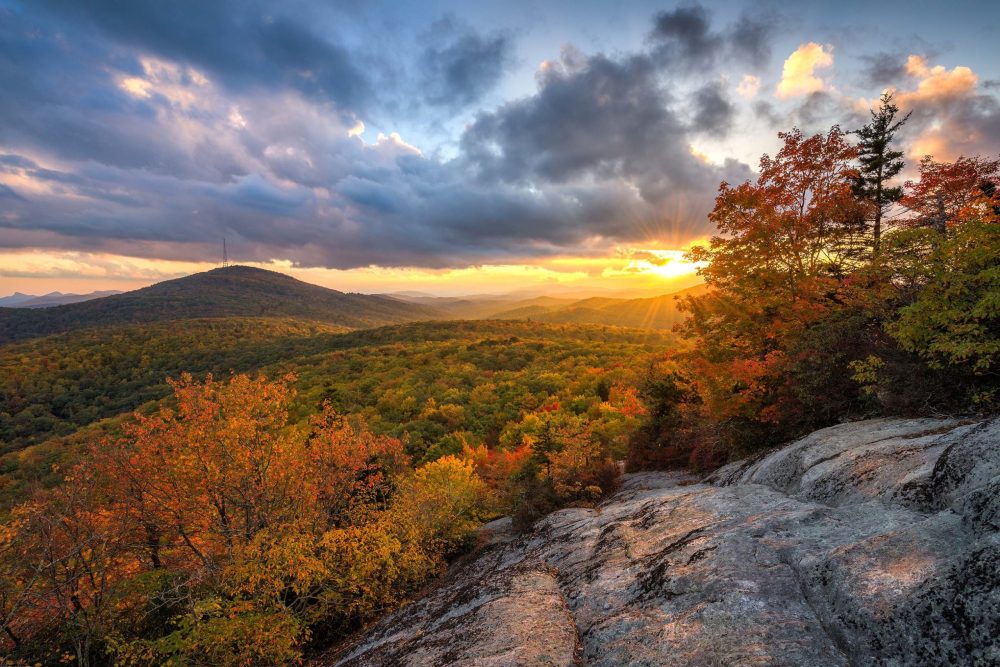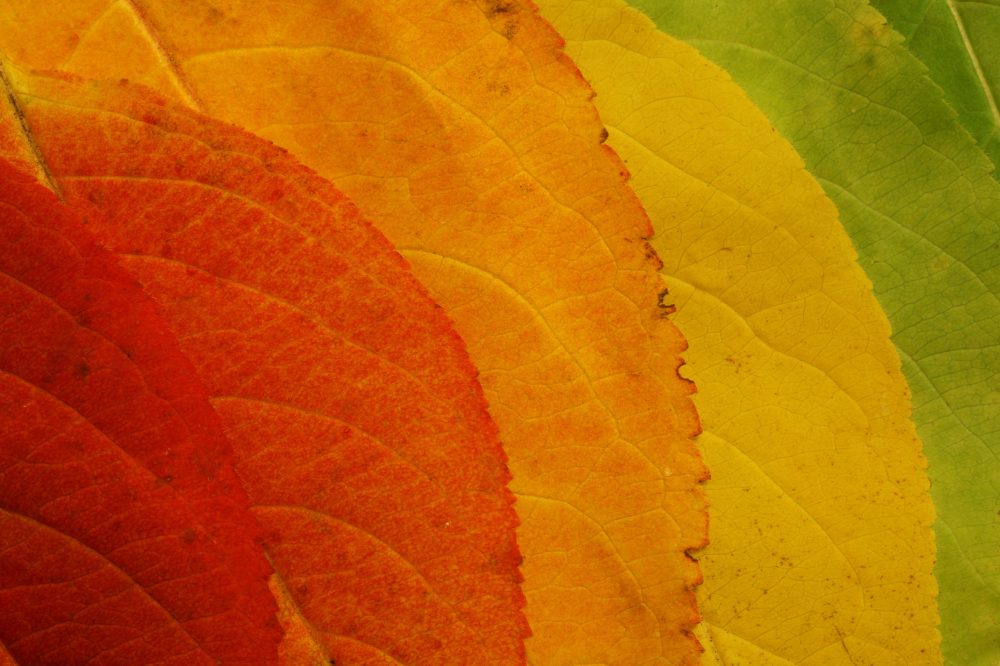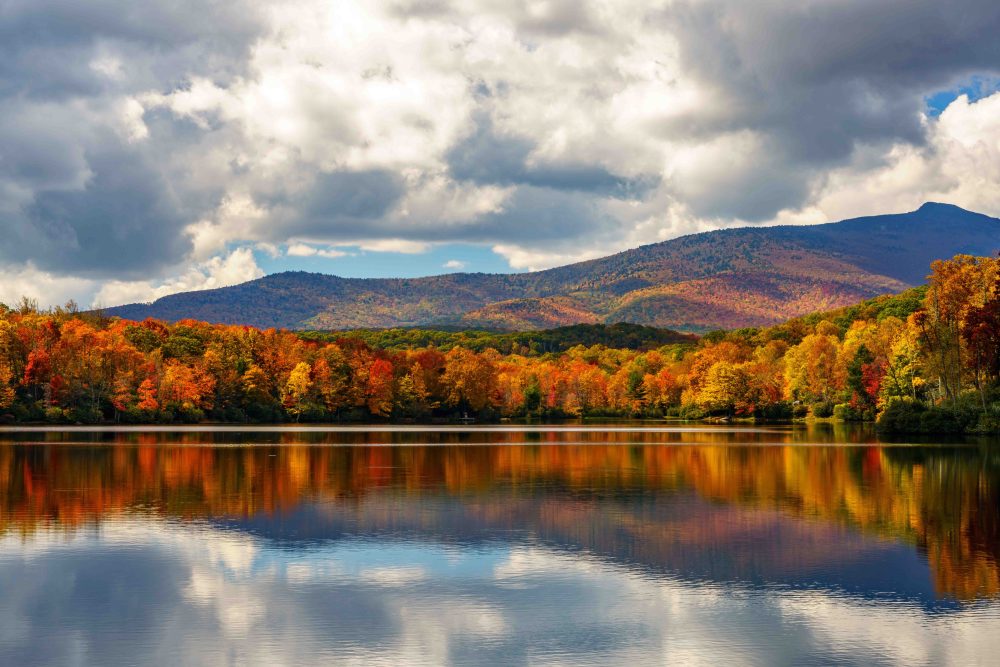Fall Color in the North Carolina Mountains: the When, Where and How

by Mike Scow, Naturalist and Ecotour Guide with Asheville Hiking Tours
Starting with stark contrast against the dark spruce and fir of the highest peaks around 6000 ft, deciduous trees transform from the lush green of summer to the array of colors in autumn. Elevation plays a crucial role in the display over the next 6 weeks. The highest regions experience the shift of seasons first, different tones slowly moving down the slopes as fall arrives.

Usually from early to mid-October, the leaves peak around 6000 to 5000 ft, continuing into the valley as temperatures drop throughout the season. This is a great time to visit areas around Mount Mitchell and Clingman’s Dome, the two tallest peaks in North Carolina. In the following two weeks around mid- to late October, driving on the Blue Ridge Parkway does not get any better as the resplendent fall color reaches its peak between 4000 and 5000 ft. This marks an ideal time to visit the mountains closest to Asheville, North Carolina and the famous Linn Cove Viaduct along the Blue Ridge Parkway. Nonetheless, in early November when tourists have retreated home, consider catching the gorgeous lingering hues of mid-elevations and the vibrant lower foothills.
Spectacular and annual, this show is the product of the deciduous trees of the forest shedding their leaves to survive the winter. When the days were sun-filled and long, these leaves provided food for their trees, capturing energy from the sun via the process of photosynthesis. Their green appearance came from chlorophyll, a sunlight-capturing pigment that actually masks other pigments not seen until autumn. As the days shorten and the morning chill takes longer to burn off, the dominant chlorophyll breaks down and reveals the splendor of color it had been hiding!

What are the colorful pigmets besides the green of chlorophyll? For the sake of simplicity, they include xanthophylls, carotenoids, and anthocyanins. Think yellows, oranges, reds/purples. Each pigment specializes in absorbing different wavelengths of the sun’s light! Varying proportions of pigments in any given species create a blanket of undulating tones throughout the forest. Variables such as unseasonal rain, early frosts and temperatures can have subtle effects on fall color. Warm days and cool, but not freezing nights, tend to produce the most radiant leaf season. Even the lack of sun can have an impact on colors; plants in sun tend to produce more reds, while those shaded produce more yellows.

Particular species display typical colors. The scarlet of sourwood leaves is often the first color to be spotted at the beginning of fall. Maples produce reds and oranges, dogwood shows off purple. Oaks tend to contribute yellows and browns while conifers and other evergreens remain typically verdant. Some green understory plants, like galax and doghobble, can turn purple after higher canopy leaves have fallen.
Suffice it to say, the combination of elevation, shifting day length and temperature with the palate of pigments in shedding leaves produces an incredible backdrop for any activities around Asheville. To visit these areas of incredible color, consider joining Asheville Hiking Tours on an engaging tour through the Blue Ridge Mountains. Otherwise, try this interactive color-changing map to catch peak leaf season around Asheville this autumn!
Natural Notes is Asheville Hiking Tours’ blog about nature, history and travel in the Appalachians. Asheville Hiking Tours offers day hikes, waterfall tours, and firefly tours, guided by naturalists, in the mountains around Asheville, NC. For more info visit www.AshevilleHikingTours.com.
